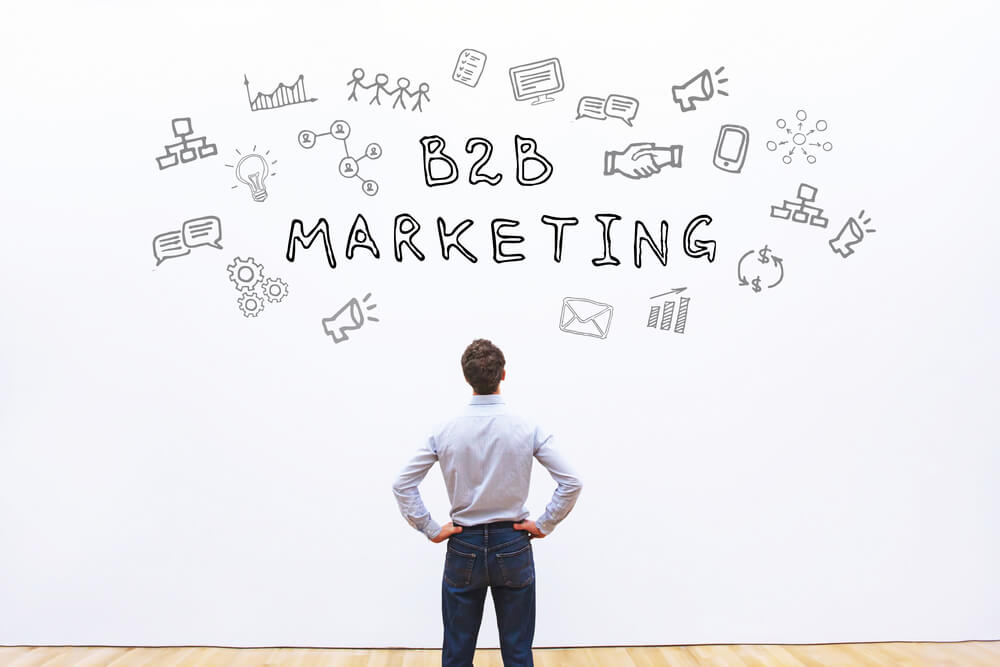The adage that generals are always fighting the last war is a lesson marketers should heed. Marketing’s inherently dynamic nature requires that marketers in every industry stay on top of the continuously evolving trends, tools, and topics. Timing is of the essence. If you’re “fighting the last war” by following your 2019 marketing blueprint, you will inevitably fall behind the innovators who are leaving the past in the dust.
So let’s look at some of the tools and strategies that forward-thinking companies should embrace this year.
1. Superior Websites
It’s 2020 – and there’s no excuse for having a clunky, unappealing website. On the one hand, themes (or templates) have made it easier than ever to create websites, allowing you to pick designs that most accurately reflect your brand’s “feel.” But their rise in popularity also means that your prospects can spot them easier – a sure tell on how much you’ve invested in your website. If your website is a central aspect of the customer experience, these cookie-cutter themes are inadequate. A well-designed, original website will not only increase conversion rates but also show your clients that you take them seriously and that you care about their experience. And let’s not forget that a website that’s custom-designed from scratch will invariably match your brand and its unique needs better than someone else’s theme.
The bottom line: it may be tempting and cost-effective to pick a generic theme, but designing an original website that truly stands out from the pack is a prudent (and long-overdue) investment.
2. Higher Quality Content
By now, most companies have caught on to the fact that content converts. In fact, according to research by Hubspot, 41% of marketing budgets were spent solely on content in 2019. Not all content is created equal, and determining the type of content that will drive your visitors to engage should be a top priority. Content for the sake of populating a website ends up generating little value and exudes unprofessionalism. Still, a shockingly large number of marketers fail to accept this fact, opting to create content that isn’t underpinned by any strategic considerations. To increase conversions and grow your brand, it’s imperative that marketers create content with purpose and substance. Figure out what your visitors are looking for by monitoring your search fields and analyzing traffic on your pages, then offer them the insights they can’t find elsewhere. B2B content, in particular, needs to offer as much value as possible for the least amount of effort. Don’t bore your clients with endless articles about well-known topics. Use your industry expertise to give them valuable insights that busy professionals seek.
3. Video Content

Speaking of content, the video has been on the rise in the past few years, with more companies than ever embracing this format. Thanks to traditional social media platforms like YouTube and Facebook, and new booming market entrants like TikTok, users are now accustomed to videos dominating their feeds. But why is video good for business?
First of all, videos allow you to offer in-depth demos of your products and services, create tutorials for your products, and even promote upcoming launches in a more engaging manner. And let’s not forget about live streams; they’re an important tool for creating genuine engagement with your followers. While you’re streaming, users can click on reactions or ask questions about your products in real-time. Live streams are also useful for promoting your events as they happen, Q&A sessions, and much more.
4. Personalized Communications
Personalization is one of the most impactful ways to make your company stand out and accelerate conversion rates. In fact, The Salesforce State of Connected Customer Report 2018 revealed that 72% of business buyers expect communication that’s tailored to their needs. It’s a safe bet that these buyers are likely to switch providers unless this need is met, so personalization goes beyond driving sales – it also plays a critical role in client retention. Customers who feel that their unique identities and preferences are taken into account in communications are less likely to take their business elsewhere. Furthermore, now that every business is online, alternatives are easier than ever to find. Personalization will help you stand out to potential clients and create better experiences for your existing ones.
5. Consolidating Martech
In the past few years, the marketing landscape saw a proliferation in new technologies that were supposed to make marketers’ lives easier through automation and analytics – and for the most part, it has. Within a few years, the number of martech companies expanded from approximately 150 to over 8,000, and more keep popping up. However, working with several different tools to manage a campaign can be tedious, create compatibility problems, and make you deal with too many customer service representatives. Martech consolidation is the answer to the problem of operating too many disparate platforms. If you find yourself fumbling with too many software solutions, maybe 2020 is the year to step back and look for one solution that encompasses multiple functions within your campaign management process. Aside from streamlining your martech capabilities, you’ll spend less time training new people to use multiple solutions, as well as get a clearer picture of your campaigns when all data comes from a single source.
6. Chatbots Are Multiplying

Customer service representatives are the unsung heroes of every industry. They deal with disgruntled customers and they have to do it with a smile. The only problem is that one representative can deal with no more than one caller at a time.
Because of that, chatbots powered by artificial intelligence are becoming an increasingly viable option for many businesses that want to reduce their customer service team’s workload. They can:
- Help customers with common issues.
- Offer them information about your business.
- Redirect them to a representative if further help is needed.
Not only do chatbots save precious time for your customer service team, but they also improve customer experience and speed up resolution times. In short, chatbots are a must-have feature in 2020.
7. Email Marketing Is Still Going Strong
To the untrained eye, email marketing is like shouting into the ether hoping for an answer that may never come. Understandably, today’s inboxes are more crowded than ever – so much so, that many email providers send promotional emails to a separate inbox. While factually correct, this sentiment doesn’t quite define the state of the industry. In fact, according to Validity’s State of Email Marketing report, email marketing is holding steady and still delivering results for most companies. Email marketing performance is also linked to increased revenue, even though companies report struggles with catching their leads’ attention and email deliverability. The key takeaway here is that while email marketing is ostensibly a relic of the past, it remains a powerful tool in your content marketing arsenal. Rather than abandoning or significantly cutting back on it, marketers should be optimizing its effectiveness by:
- Continually A/B testing subject lines, content, and delivery time.
- Strategically segmenting email lists in order to create personalized content that resonates with each unique segment of your target audience.
Conclusion
Technology has revolutionized the way we work, and marketing, in particular, has changed dramatically thanks to the proliferation of new tools. From smart websites and personalized emails to automation, these tools should be part of any innovative marketer’s arsenal. Glean the lessons from history’s generals who failed to modernize their strategies and tactics, insisting on fighting the last war against forward-looking opponents, and embrace change. Whether an original website built from scratch or a new martech platform, it will surely enable you to phase out redundant technologies.
SOURCE: Search Engine Journal









